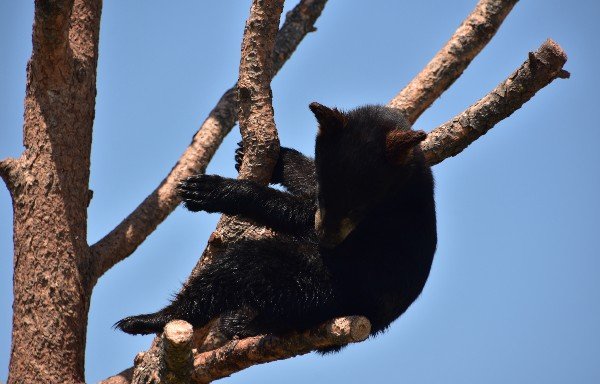Grizzly bears often evoke images of towering, fearsome predators that thrive on a purely carnivorous diet. However, this perception is far from reality. These majestic creatures are omnivores, meaning their diet extends well beyond meat, encompassing a diverse range of foods that sustain them throughout the year.
If you’re eager to explore the fascinating world of grizzly bears and their remarkable adaptations, a visit to Yellowstone Bear World is a must. Here’s an in-depth look at their dietary habits and the seasonal changes that shape their survival.
Understanding Grizzly Bears
Grizzly bears are a subspecies of the North American brown bear and share close genetic ties with the massive Kodiak bears of Alaska. Their fur varies from light tan to dark brown, and they are easily recognized by their dished facial profile, short rounded ears, and the prominent hump on their shoulders. This muscular hump provides immense strength for digging and foraging. Additionally, their long, curved claws serve as essential tools for excavating dens, unearthing roots, and capturing prey.
Weighing an average of 700 pounds, some female grizzlies can reach 800 pounds, while their Alaskan relatives grow even larger due to differences in diet.
What Do Grizzly Bears Eat?
Despite their powerful stature, grizzly bears are not strict predators. Their omnivorous nature allows them to consume a vast assortment of foods, adapting their diet to whatever is readily available. Their opportunistic feeding habits make them expert scavengers, often foraging for both natural and human-sourced food, including garbage when accessible. To maintain their massive size, a grizzly bear can gain up to six pounds per day, ensuring they store enough fat for survival, especially as winter approaches.
A Closer Look at the Grizzly Bear Diet
Grizzly bears thrive on a diverse menu that includes:
-
Plant-based foods – Insects, grasses, broad-leaved herbs, tubers, sedges, berries, and roots.
-
Animal sources – Salmon, deer, moose, ground squirrels, mice, bison, and marmots.
-
Scavenged remains – Grizzlies frequently consume rotting animal carcasses left behind by other predators or natural causes.
Unfortunately for livestock farmers, grizzlies are also known to prey on domestic animals such as sheep and cows, leading to economic challenges in regions where their habitats overlap with ranching operations.
Canadian and Alaskan Grizzlies vs. Yellowstone Grizzlies
The grizzly bears of Canada and Alaska tend to be larger than those found in Yellowstone National Park. This is primarily due to dietary differences:
-
Yellowstone grizzlies consume a leaner diet of rodents, grasses, tubers, cutworm moths, and nuts.
-
Alaskan grizzlies benefit from a high-fat diet, particularly the abundance of salmon, which enables them to reach weights of up to 1,200 pounds.
Seasonal Diet Adaptations
Grizzly bears adjust their diet according to seasonal food availability:
-
Spring & Summer – Bears actively feed on plants, insects, and small mammals to replenish their energy after winter hibernation.
-
Fall – As they prepare for hibernation, grizzlies enter a feeding frenzy known as hyperphagia, consuming as much food as possible to store fat reserves.
-
Winter – Bears retreat into their dens, living off their stored body fat while remaining inactive for five to seven months.
Visit Yellowstone Bear World
A trip to Yellowstone Bear World offers an unparalleled opportunity to observe grizzly bears up close in a naturalistic setting. Beyond witnessing their physical strength and intelligence, visitors gain valuable insights into the behaviors that define these awe-inspiring creatures throughout the year. The park is also home to mule deer, moose, and other incredible wildlife, making it a must-visit destination for nature enthusiasts.
To schedule your up-close wildlife experience, call (208) 359-9688 today.
Embark on an unforgettable journey into the world of grizzly bears and discover the true essence of these magnificent animals at Yellowstone Bear World!






